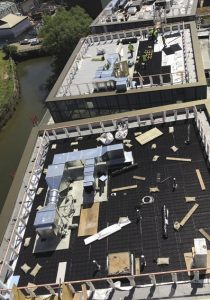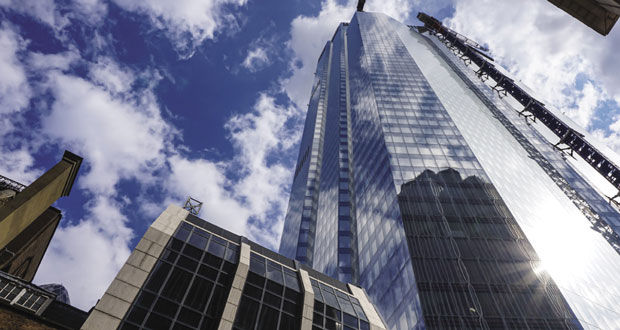FIRE SAFETY DESIGN IN THE UK
As mentioned earlier, in the UK, we currently have a performance-based code. This describes how a building should behave in terms of fire and it is then up to the designers to show that the measures that they have put in place will allow the building to achieve that performance.
The idea is that this allows designers to be more creative and still have buildings that perform well – but interpretation can be difficult. Following a fire at Lakanal House in 2009, which killed six people, the coroner at the inquest called Part B of the Building Regulations, which set out the performance standard, ‘a most difficult document to use’.
To complicate matters further, there is not currently one standard code that the four UK nations adhere to. Fire safety designers in England work to Approved Document B, Northern Ireland, Wales and Scotland follow other guidance. An example of these differences is that in England, Wales and Scotland, combustible cladding is banned for residential buildings over 18m tall. With regards to sprinklers – in England, they are required in buildings above 11m, while in Scotland, the regulations require sprinklers in all multi-occupancy residential buildings, regardless of height, and in Wales any residential building, regardless of multi-occupancy, needs to have residential sprinklers. Meanwhile, in Northern Ireland, a combustible cladding ban has not yet been introduced, nor has the mandated use of sprinklers in residential blocks.
With all these seemingly small (but very important) differences between different areas in the UK and what could be argued to be an unhealthy focus on minimising cost, have we gone too far towards a performance standard, and away from prescription, when it comes to fire safety and construction products regulation?
That question is now starting to be addressed with the introduction of the Draft Building Safety Bill, in addition to similar legislation in Wales and Scotland, and the Fire Safety Bill, which will bring forward necessary reforms to the service and maintenance of high-risk buildings, with a clear focus on improving both building and fire safety; it can only be a matter of time before the NI Executive puts similar measures in place. Each Government’s  objective is for the long-lasting reform of the building safety system so that people will be, and will feel, safer in their homes. And, crucially, they can trust in the competency of those who are responsible for the service and maintenance of their building.
objective is for the long-lasting reform of the building safety system so that people will be, and will feel, safer in their homes. And, crucially, they can trust in the competency of those who are responsible for the service and maintenance of their building.
HOW TO STAY COMPLIANT
With so many areas to consider when determining the levels of fire safety in your buildings, in order to ensure you stay compliant it’s worth arranging scheduled maintenance programmes from competent servicers. Look for those which are certified to recognised standards; for instance, Colt was the first company in the UK to be certified to both IFC SDI 19 and SDI 05, demonstrating not only our competency in fire strategy, scheme design and installation but also our high standards of service.
In addition to keeping your buildings and their occupants safe, planned and regular maintenance can extend the life of an item, reducing the likelihood of downtime. Such a programme also allows the equipment to be updated in line with the latest technological advances and standards.
For more information visit www.coltinfo.co.uk
As the responsible person you must carry out and regularly review a fire risk assessment of the premises. This will identify what you need to do to prevent fire and keep people safe. You must keep a written record of your fire risk assessment if your business has five or more people.
- Carrying out the assessment
- Identify the fire hazards
- Identify people at risk Evaluate, remove or reduce the risks
- Record your findings, prepare an emergency plan and provide training
- Review and update the fire risk assessment regularly
You’ll need to consider:
- Emergency routes and exits
- Fire detection and warning systems
- Fire-fighting equipment
- The removal or safe storage of dangerous substances
- An emergency fire evacuation plan
- The needs of vulnerable people, for example the elderly, young children or those with disabilities
- Providing information to employees and other people on the premises
- Staff fire safety training
HELP WITH THE ASSESSMENT
You can do the fire risk assessment yourself with the help of standard fire safety risk assessment guides. If you do not have the expertise or time to do the fire risk assessment yourself you need to appoint a ‘competent person’ to help, for example a professional risk assessor. Your local fire and rescue authority might be able to give you advice if you’re not sure your risk assessment’s been carried out properly. However, they cannot carry out risk assessments for you.





